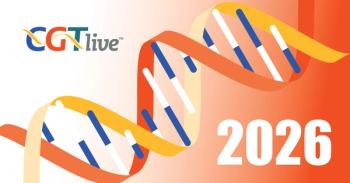
Biomarkers Emerge for Severe Neurotoxicity Risk After CAR T-Cell Therapy
Investigators reported the characterization of early clinical and serum biomarkers that may identify specific patients with ALL being treated with 19-28z chimeric antigen receptor T cells needing an early intervention to mitigate the development of severe neurotoxicity.
Eric L. Smith, MD, PhD
Investigators reported the characterization of early clinical and serum biomarkers that may identify specific patients with acute lymphoblastic leukemia (ALL) being treated with 19-28z chimeric antigen receptor (CAR) T cells needing an early intervention strategy to mitigate the development of severe neurotoxicity.
"Baseline clinical and early laboratory and biological tests can serve as useful biomarkers of neurotoxicity associated with CAR T cells,” said Eric Smith, MD, PhD, medical oncologist, Memorial Sloan Kettering Cancer Center (MSKCC), who presented the findings during the 2017 European Hematology Association Congress.
This safety analysis was done on 53 adult patients with relapsed or refractory CD19-positive B-cell ALL participating in a phase I trial who were treated with 19-28z CAR T cells following conditioning chemotherapy at MSKCC. The investigators identified clinical and serum biomarkers associated with severe neurotoxicity by evaluating demographics, treatment, and clinical blood parameters plus in vivo CAR T expansion and serum cytokines.
The median age of patients was 44 years (range, 23-74), and 68% of patients had received 3 or more prior salvage treatments, including 19% of patients who had received ≥5 prior therapies. Patients with active central nervous system disease or significant heart disease were excluded.
Previously reported efficacy results from the trial showed an overall complete response (CR) rate of 85% and a minimal residual disease-CR rate of 67%. The median overall survival was 12.9 months (95% CI, 8.7-23.4).
“CD19-specific CAR modified T cells produce high antitumor activity in relapsed or refractory ALL, but can also be associated with cytokine release syndrome (CRS) and neurotoxicity,” said Smith.
The analysis reviewed neurological toxicities, including aphasia, global encephalopathy, seizure-like events, and delirium, which can also be a component of CRS, in patients with ALL who were treated with CAR T cells. Severe neurotoxicity was observed in 22 of 53 patients; 20, 8, 2, 18, and 3 patients experienced grades 0, 1, 2, 3, and 4 neurotoxicity, respectively. No grade 5 neurotoxicity or cerebral edema occurred in this cohort.
The time course of developing neurotoxicity symptoms revealed that fever first appeared by day 2 post-infusion and the first neurological symptoms appeared at a median of 9 days.
Per protocol, patients developing CRS were treated with tocilizumab (Actemra), which, though effective in reducing severe cytokine release syndrome (sCRS), had no positive effect on the natural history of severe neuropathy in this cohort.
“The peak neurotoxicity grade and most severe symptoms were observed after patients received tocilizumab in 13 out of 15 cases of grades 3 and 4 neurotoxicity,” said Smith. Tocilizumab use correlated with increased risk of severe neurotoxicity (odds ratio, 5.3; P = .012) but this may be confounded by the presence of CRS as a risk factor for severe neurotoxicity.
“Tocilizumab did not prevent progression to severe neuropathy in the vast majority of cases,” said Smith.
Severe neurotoxicity lacked a correlation with the CAR T cell dose, but both CRS and neurotoxicity did show an association with the peak CAR T cell expansion; in vivo peak CAR T expansion at day 7 significantly correlated with severe neurotoxicity (P <.01).
Severe neurotoxicity was also associated with peak serum cytokines at day 3; elevated granulocyte macrophage colony-stimulating factor, interferon-gamma, interleukin (IL)-15, IL-5, IL-10, IL-2 at day 3 post T-cell infusion significantly associated with severe neurotoxicity (all P <.01). Several of these cytokines were also found to be elevated in severe cases of CRS; however, elevated IL-5 and IL-2 at day 3 were specific for the development of severe neurotoxicity.
“On multivariate analysis, a platelet count <60 or mean corpuscular hemoglobin concentration >33.2%, and the presence of morphologic disease, defined as >5% blasts at baseline, could also identify patients at risk of developing severe neurotoxicity with 95% sensitivity and 70% specificity,” according to Smith.
Park J, Riviere I, Wang X, et al. Baseline and early post-treatment clinical and laboratory factors associated with severe neurotoxicity following 19-28z CAR T cells in adult patients with relapsed B-ALL. Presented at: 2017 EHA Congress; June 22-25, 2017; Madrid, Spain. Abstract S143.
<<<
By multivariate analysis, the incidence of severe neurotoxicity associated with high disease burden, defined as ≥50% blasts at the time of T-cell infusion (P = .0045) and with post-treatment CRS ≥grade 3 (P = .0010). No association between severe neurotoxicity was observed with age, weight, the choice of conditioning chemotherapy, or the number of prior lines of treatment.
Newsletter
Stay at the forefront of cutting-edge science with CGT—your direct line to expert insights, breakthrough data, and real-time coverage of the latest advancements in cell and gene therapy.






























